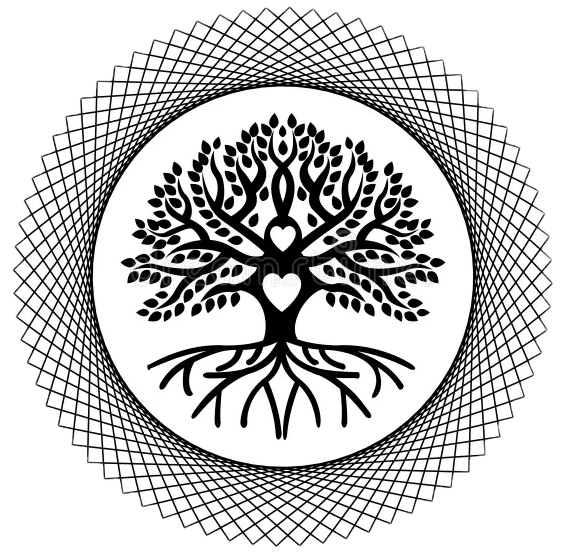Bridging Ancient Wisdom and Modern Science
Bridging Ancient Wisdom and Modern Science: How Meditation and Neuroscience Are Shaping a New Era of Healing
We are living in a time when two seemingly different worlds—ancient spiritual wisdom and modern scientific inquiry—are beginning to dance together. What once existed as parallel streams are now merging into a powerful confluence. Practices like meditation, yoga, breathwork, and mindfulness—once seen as mystical or fringe—are today being studied and validated in neuroscience labs, psychology clinics, and even corporate boardrooms.
This integration marks not just a scientific shift, but a cultural one. People are no longer satisfied with blind faith alone, nor with dry rationalism. Instead, they are seeking a path that is both grounded and transcendent—one that honors the insights of ancient seers while embracing the tools of contemporary research. This is not spirituality versus science—it is spirituality through science, and science enriched by soul.
Ancient Roots, Modern Proof:
Consider meditation. For millennia, sages across India, China, Tibet, and beyond sat in silence, not to escape the world but to understand it—from within. They observed the nature of thoughts, the dance of breath, the inner architecture of consciousness. Today, neuroscientists are catching up. MRI scans now reveal how regular meditation can rewire neural pathways, enhance gray matter, and reduce the activity in the brain’s default mode network (DMN)—often linked to anxiety and self-referential overthinking.
Similarly, yoga—traditionally a path of union between body, mind, and spirit—is no longer viewed merely as physical exercise. Scientific studies show its profound impact on the autonomic nervous system, inflammation, hormonal balance, and emotional regulation. It’s not just about flexibility—it’s about resilience.
Mindfulness, drawn from Buddhist contemplative traditions, is now a mainstream therapeutic tool used in cognitive behavioral therapy (CBT) and dialectical behavior therapy (DBT). Programs like MBSR (Mindfulness-Based Stress Reduction), pioneered by Jon Kabat-Zinn, have brought Eastern attention-training practices into hospitals, schools, prisons, and corporate offices—with measurable results.
The Role of Thought Leaders: Bridging the Gap:
Influential figures like Dr. Deepak Chopra have helped shape the public dialogue around this integration. In his recent posts on X (formerly Twitter), Chopra has emphasized guided meditations that are not only rooted in ancient spiritual traditions but also informed by the latest findings in neuroscience. His approach often includes language about neuroplasticity, heart-brain coherence, and the parasympathetic nervous system—all grounded in rigorous science while retaining the soul of traditional teachings.
He’s not alone. Researchers like Dr. Joe Dispenza explore how meditative states impact gene expression. Dr. Richard Davidson’s work at the University of Wisconsin has studied the brains of long-term Buddhist monks. And the Dalai Lama himself has partnered with neuroscientists in initiatives like the Mind & Life Institute to explore how compassion, attention, and mindfulness impact the brain.
Why This Matters Now:
In today’s overstimulated, hyperconnected world, we face unprecedented levels of stress, anxiety, and emotional fragmentation. The old models of “fixing” the mind with only medication or talk therapy often fall short. People want tools that work—that engage the whole being: body, breath, emotion, attention, and meaning.
This is where the ancient practices shine.
Breathwork, for instance—once practiced by yogis and Sufis—is now being used to regulate the vagus nerve and reduce trauma responses. Yogic philosophies of detachment and inner stillness are showing up in positive psychology frameworks. Even prayer, long dismissed in clinical settings, is being re-examined for its power to cultivate awe, surrender, and neurochemical balance.
The blending of spiritual practices with scientific validation offers both credibility and accessibility. It removes the “woo-woo” stigma while preserving the sacred essence of these teachings. It also invites people from all walks of life—skeptics and believers alike—into a shared space of exploration.
A Return to Wholeness:
The integration of ancient wisdom with modern science is not about proving spirituality. It’s about rediscovering the profound intelligence embedded in our inner lives. It reminds us that healing doesn’t always come in the form of pills, and transformation isn’t reserved for monasteries or therapy rooms.
We are learning, perhaps remembering, that the breath is a bridge between the conscious and subconscious mind. That silence is not emptiness, but a gateway to neuro-integration. That ancient mantras and mudras hold somatic codes that can shift mood, memory, and even cellular behavior.
This movement is a return to wholeness—where the mystic and the scientist sit at the same table, not in debate, but in reverence.
The Road Ahead:
As research deepens and technology advances, we can expect even more refined tools that blend neuroscience with ancient practice—apps that track meditation-induced brainwaves, wearables that guide heart-breath coherence, AI-guided mindfulness coaches rooted in yoga philosophy.
But the real transformation will remain inward. Because while science can map the terrain, it is the journeyer who must walk the path.
Let the wisdom of the old meet the curiosity of the new. Let breath meet brain, and silence meet science. In that meeting, we may just find what the modern world has long forgotten: that peace, insight, and transformation are not distant dreams, but already waiting within.

